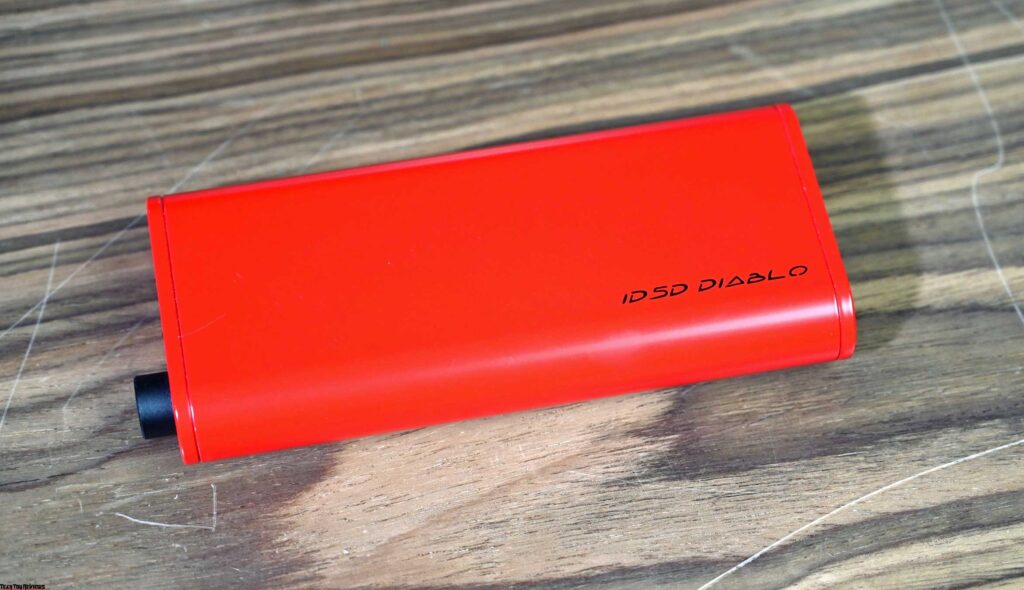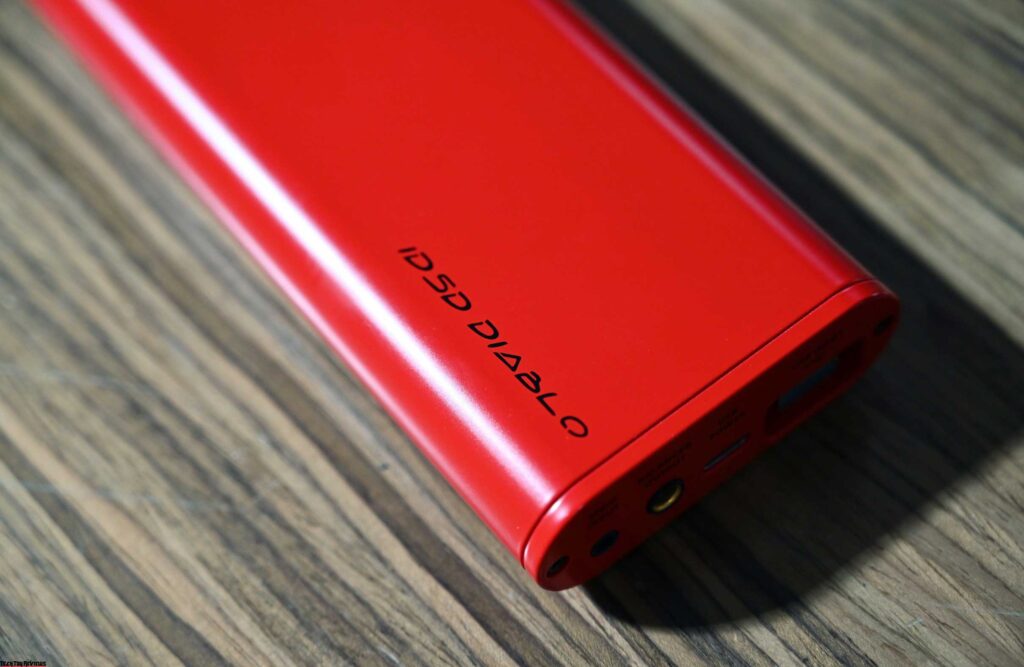The iFi iDSD Diablo is its flagship portable DAC/Headphone Amp, also the first product to mark the engineering design innovation in amplification and decoding that iFi audio has been so passionate about. The Diablo costs about $900 and $150 more than its predecessors (such as the iDSD Signature Review) but isn’t equipped with X-Bass and 3-D+ technology, instead, it has the terrible up to ~5W @ 32Ω capability.
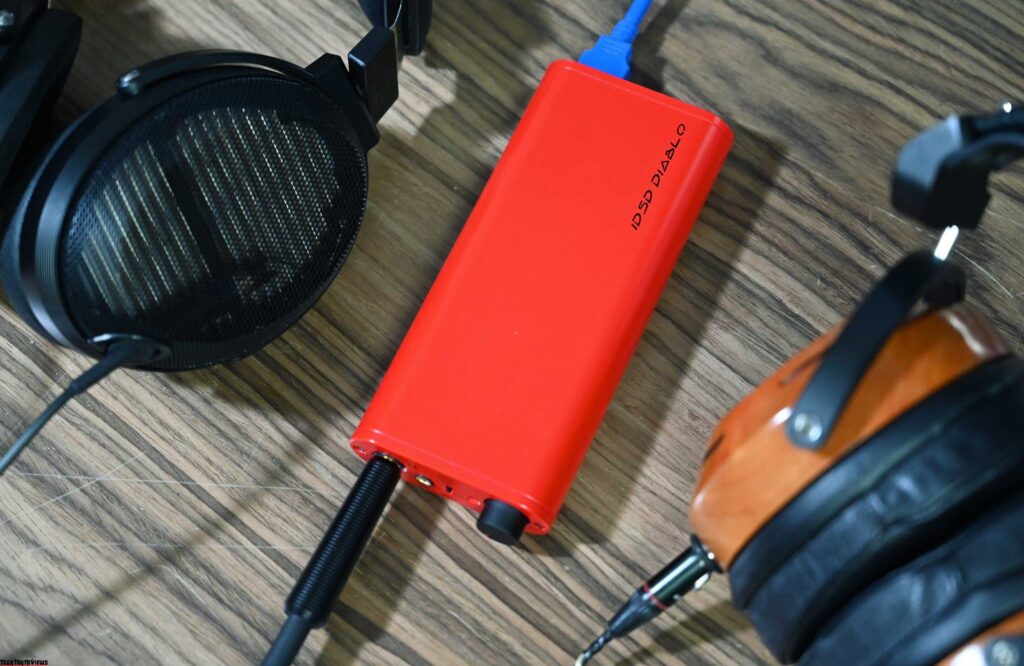
iFi iDSD Diablo Specifications
- Product Name: iFi iDSD Diablo
- Uses: Portable DAC/Amplifier
- Input: USB 3.0 type-A, S-PDIF (3.5mm coaxial/optical)
- Compatible formats: DSD512/256/128/64, Octa/Quad/Double/Single-Speed DSD; DXD (768/705.6/384/352.8kHz), Double/Single-Speed DXD; PCM (768/705.6/384/352.8/192/176.4/96/88.2/48/44.1 kHz); MQA (Full Decoder)
- Frequency response: 10Hz-80kHz(-3dB)
- SNR (Balanced/SE): -120dB/-114dB
- Dynamic Range (Balanced/SE): 120dB/114dB
- THD + N (Balanced/SE): 0.002%/0.001%
- Maximum output power (Balanced/SE): 19.2V/611mW @600Ω, >12.6V/4,980mW @32; 9.6V/153mW @600Ω, >8.8V/2,417mW @32Ω
- Output Balanced: 4.4mm
- Power Consumption: 12W (Turbo), 5W (Normal), 2W (Eco)
- Battery capacity: 4800mAh
- Dimensions: 166mm x 72mm x 25mm
- Weight: 330g
What is included in the product set?
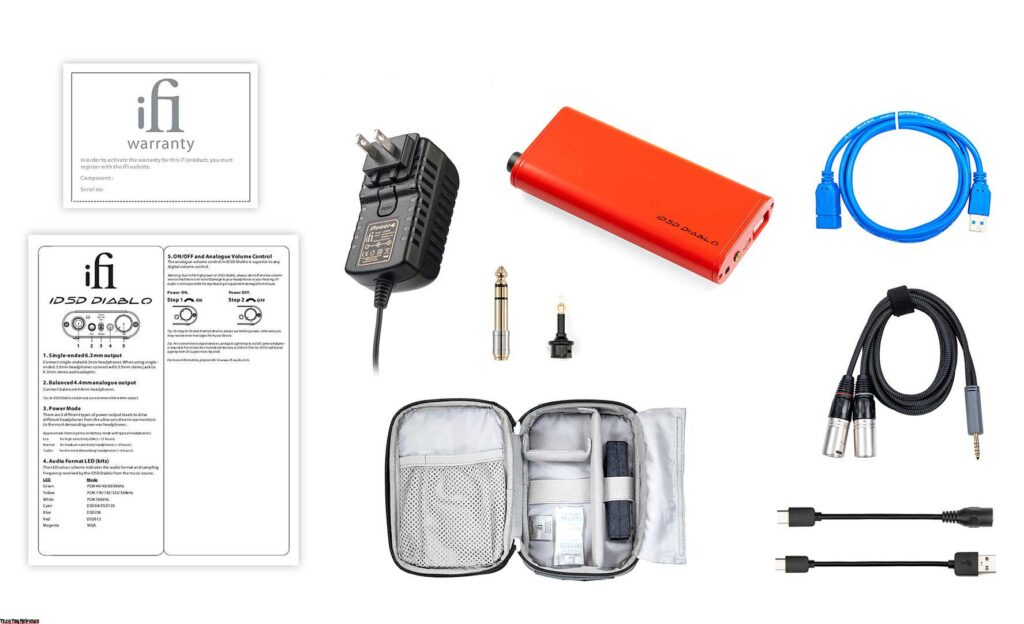
Opening the box, the main characters are iFi iDSD Diablo DAC/amplifier, charger, USB-C cable, USB-A adapter, USB-A male/female cable, 4.4mm-to-XLR cable (3-pin), 6.35 mm -to-3.5mm adapter, Optical SPDIF-to-3.5mm adapter, and iFi iTraveller case.
Design
The housing is electrostatically painted in an attractive red color. The round case differs from iFi’s previous USB DAC models, which often have an angular design.
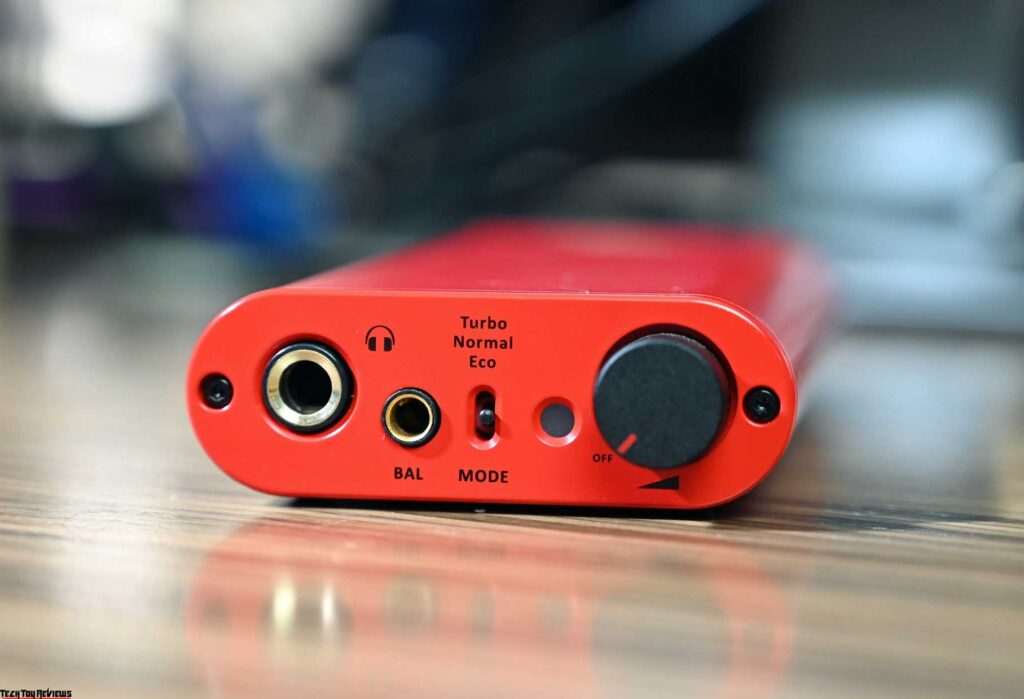
The iFi iDSD Diablo is equipped with a 4.4mm balanced and 6.35mm single-ended jack for 2 type headphones and has a 4.4mm line out for outputting to a larger sound system. As mentioned above, iFi iDSD Diablo has only gained an adjustment switch with 3 levels, Eco, Normal, and Turbo for headphones from low impedance, high sensitivity to high impedance low sensitivity.
LEDs indicate signal decoding modes including:
- Gold: PCM 48/44.1kHz
- White: PCM 768/705.6/384/352.8/192/176.4/96/88.2kHz
- Lam: DSD 128/64
- Red: DSD 512/256
- Green: MQA
- Blue: MQA Studio
- Lotus: Original Sample Rate (MQA)
Note that if you update firmware 7.0c (GTO filter/MQA/DSD256) for iDSD Diablo, the LED for PCD modes will not change (due to the GTO filter).
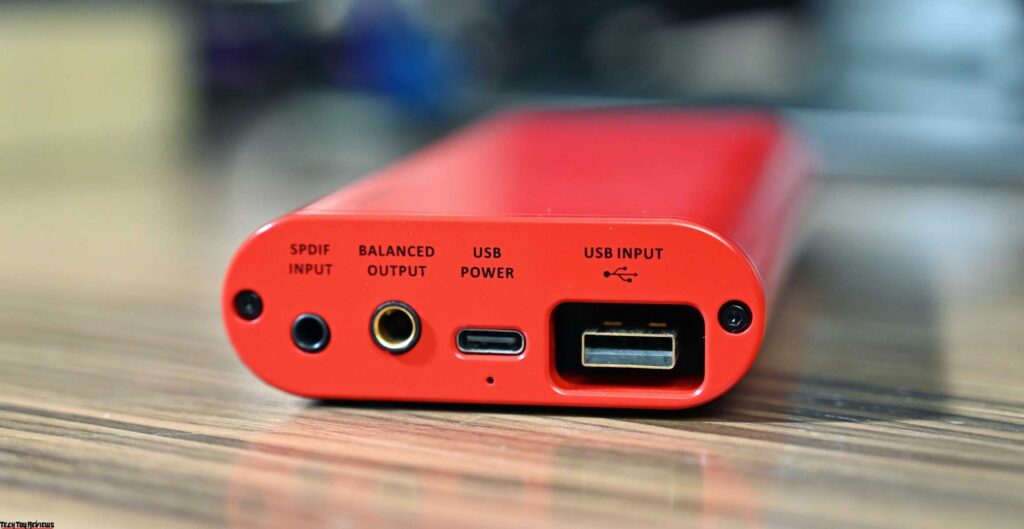
The rear of the device includes a USB-A input port, USB-C charging port (with indicator light), 4.4mm balanced output, and 3.5mm S/PDIF output. The color of the charging indicator light will change from red (low battery) to green (full battery) and white (when fully charged). Using time will be about 6 hours depending on the gain setting, Eco mode about 8-10 hours, Normal from 6-8 hours, and Turbo about 3-5 hours.
Hardware
The product is equipped with 2 Burr-Brown DAC chips with a 16-core XMOS processor for bit-perfect decoding PCM 768, DSD 512, and 2xDXD.
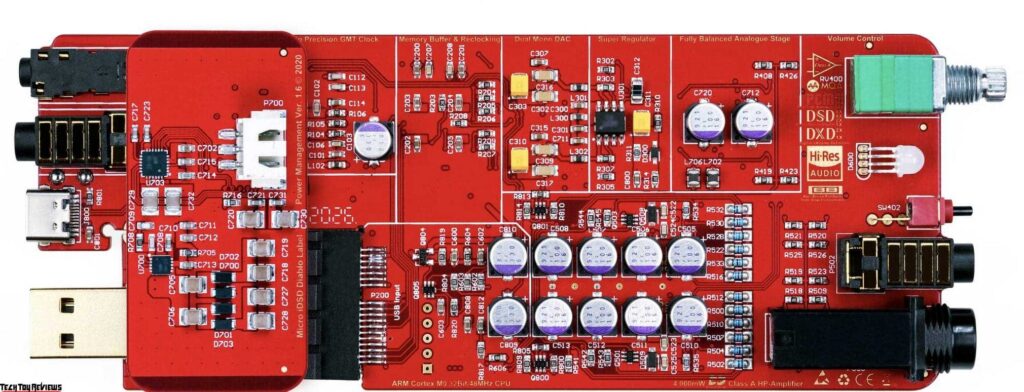
Also in iDSD Diablo, iFi uses a special balanced dual-mono symmetrical circuit design called PureWave for the first time, basically, two independent circuits to reduce the cross-channel effect of the current signal to the power and amplifier circuits on the Diablo. The form of the boards will be separated, increasing the dynamics of the sound.
In addition, iFi uses OptimaLoop for the first time, a technology that means iFi will optimize local negative feedback regions in amplifier circuits to control gain and distortion at a more sophisticated level than simply exploiting feedback. Global feedback, providing overall improvement in sound.
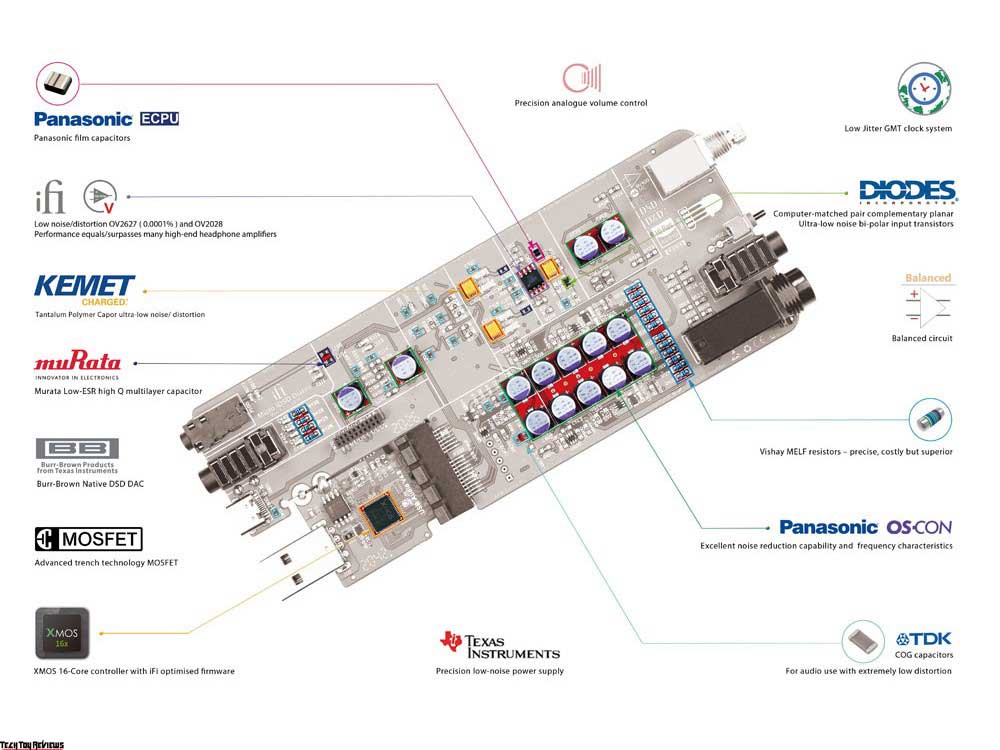
There are other improvements such as the DirectDrive signal interstage structure using MOSFET switch so that when you increase/decrease the gain, you won’t have the phenomenon of dropping out of the headset using femto-clock GMT generator (Global Master Timing) to reduce jitter for the decoder circuit, the use of high-end capacitors and resistors such as TDK C0G (Class-1), Panasonic OS-CON, muRata, and Vishay MELF is critical for power and signal locations. The iDSD Diablo receives 4.98W (balanced) and 2.5W (single-ended) @ 32Ω, with this capability making it more like a desktop amplifier than a portable product.
Sound
We tested Diablo with Sennheiser IE 900, ZMF Eikon, Audeze LCD 4, T+A Solitaire P-SE, then we found Diablo wasn’t getting bored with the 3 full-size devices mentioned above, the sound feeling with each headset may be different, but are all very positive. However, we find the iDSD Diablo plays with in-ears like the FD5 and IE 900, it sounds too strong, to low gain turn the volume up until 8 am 9 pm, it sounds loud, too tense, listening for a long time will cause ear fatigue so we go straight when we got it, we beat it at full size.
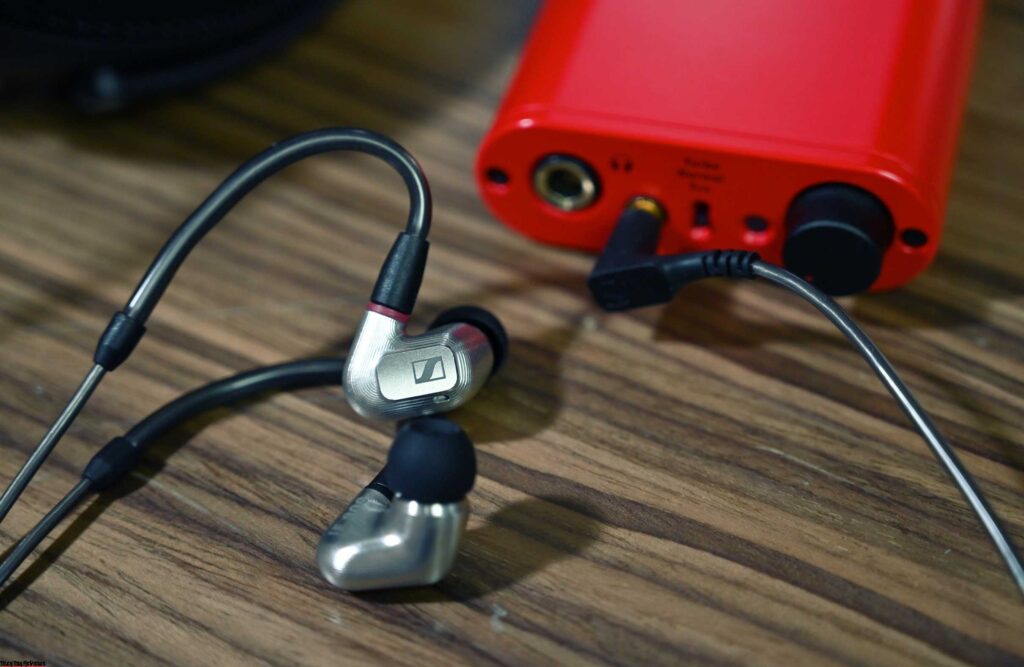
We think to play in-ear, iFi xDSD is already more than enough for existing in-ear genres, let Diablo carry the more difficult headphones.
Surely you audiophiles are familiar with Allan Taylor’s The Beat Hotel or You Don’t Know Me by Patricia Barber? When listening with the ZMF Eikon, the Diablo reproduces very inspiring bass male and female vocals, the Eikon itself is a spacious mid-range, rich physique, a headset with strong internal power, the Diablo pumps more for this internal force. A little subtlety for male vocals to come out naturally, broadly, and solidly. Large opening, vocals and bass, and high range instruments are unbalanced, no extra bass, no harsh treble, with a dynamic headset like the Eikon with 300 ohms of impedance, the Diablo runs very well at a normal gain.
After this, listening to Sock Cha Cha (Benny Golson), Diablo proved to be very energetic and eclectic when the trumpet sounded long, deep and wide, slightly deep and smooth. Not short of breath and especially not getting stuck on the flipping double bass.
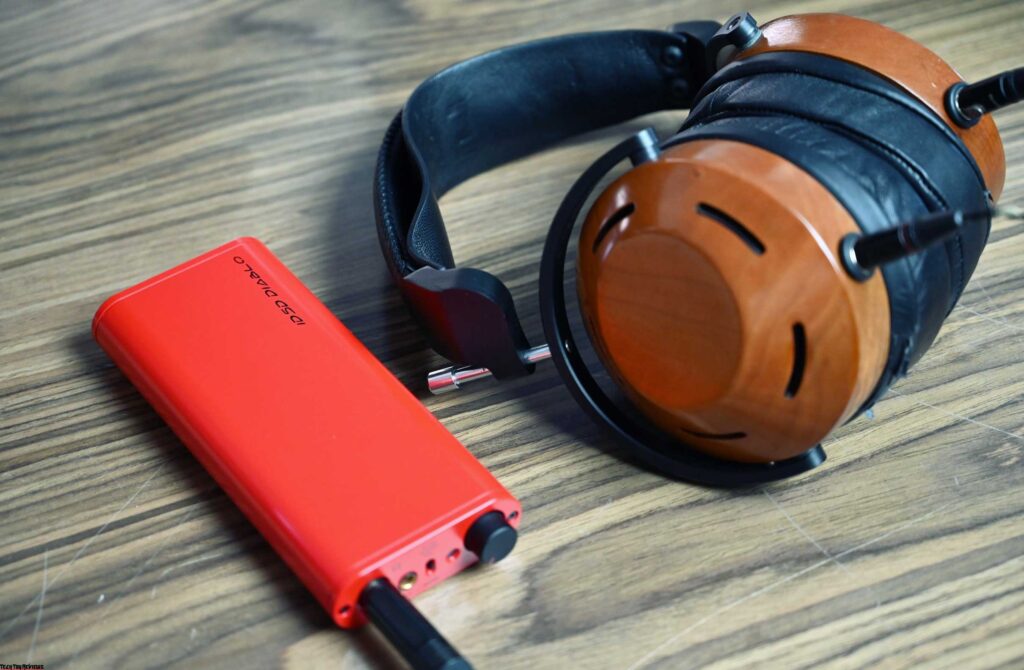
With the Eikon and Diablo combo, Diablo shows good dynamics while listening to metal like Divine (Korn), keeping the energy of the bass guitar and great drums, although this version is quite tight, Diablo still gives us a feeling of Fieldy’s bass guitar snaps are very distinct, crisp and loud, while David Silveria’s kick drum is big and bouncy. We tried listening to the iDSD Signature with the Eikon, it’s clear, the Diablo’s performance in reproducing the bass range is much better than the other brother.
Then we use planar-magnetic headphones T+A Solitaire P-SE to experience, this is a headset that is more about purity, balance, has a fairly wide soundstage, we still leave Low Gain on Diablo. We were shocked when listening to The Devil’s Trill or The Colon Concert (Keith Jarrett) because the recording space is huge, the feel when listening to ZMF is as wide as one bar, the feel of listening to Solitaire P-SE is a classical stage, as big as a conservatory. The steady and deep background reproduced by Diablo and new generation amplifiers brings to the piano and violin the crisp, flexible, detailed sound of volume changes during the highs and lows of solo sequences.
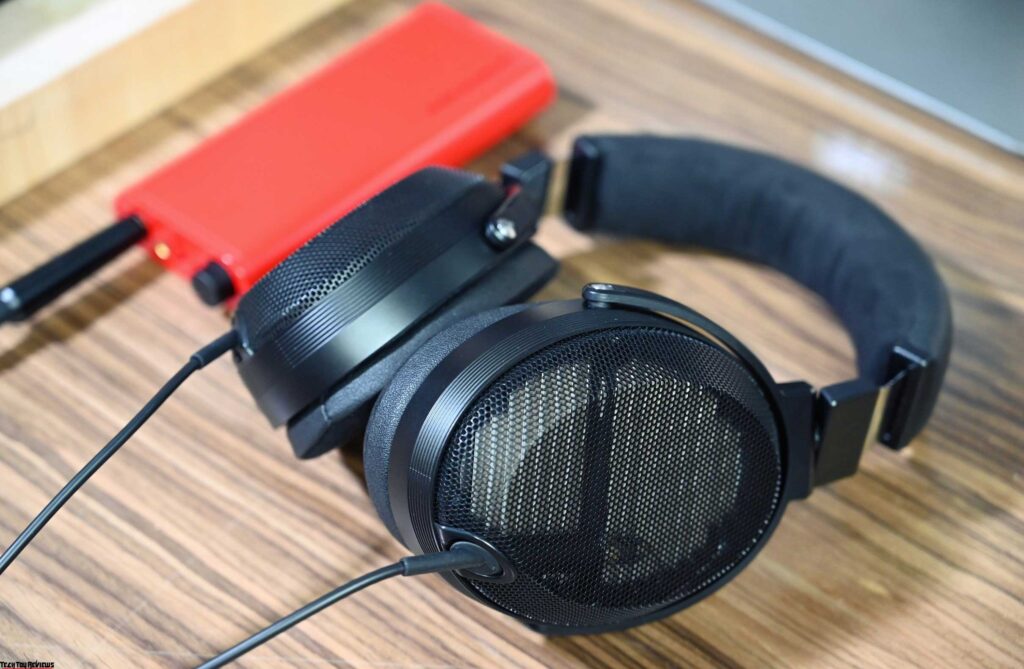
We got goosebumps a few times because of space and the intensity of the sound seemed so real, it’s true that German headphones always have a personality, smooth, sleek, a little gargantuan.
Final line
The reason to use an ear with a completely different sound quality from Eikon is to determine where the sound nature of iDSD Diablo lies, comparing headphones or amplifiers is not simply about getting a headset. Plugin what you think is best, then plug in the amplifier and start evaluating, from full-size to in-ears, from dynamic to planar-magnetic, to mix and evaluate you with the most subjective, most extreme experience possible. There should be enough headphones and for the most personal to decide how the device sounds.
In this case, we’d judge that the Diablo stands out with its sharp, clean tempo, full bass-mid-treble physicality, overall sound moving in a neutral direction, and is priced at $899.99 on Amazon.com, and £999 Amazon.co.uk, not flattering at all. You can comfortably pair with headphones like the Sennheiser HD 600 and HD 650, Hifiman Ananda or Sundara, Audeze LCD X, or LCD 3 to create a high-quality portable combo.
